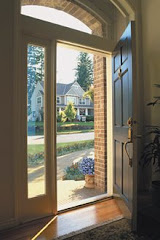January 20, 2010 - Kohler, Marvin Windows and Doors and Whirlpool are three manufacturers ready with new lines of green and sustainable products for today’s new homes, company representatives said today at the National Association of Home Builders’ International Builders’ Show in Las Vegas.
But until lenders and appraisers learn to recognize the value of green innovation and the money it can save new home buyers, there is not enough incentive in the marketplace for large-scale implementation, said Bill Nolan, the Florida home building consultant who moderated the first of three press conferences in commemoration of Green Day at the Builders’ Show.
Kohler’s water-saving toilets use an average of 39,000 fewer gallons of water per year for a family of four – a lifetime of drinking water for three people, said Shane Judd, senior marketing manager of water conservation for the company. New products will incorporate rainwater reuse and gray water – using the water draining from the shower stall to fill the washing machine, for example.
Marvin emphasizes long-term sustainability rather than first-time costs and also pays close attention to green practices during the production process, said Brett Boyum, director of marketing. Each year, 8,500 tons of shavings and other wood waste are used to heat the company’s manufacturing plant.
Ed Linder, division director, Whirlpool Corporation, said his company is manufacturing ranges that use 40 percent less energy and appliances that are "smart-grid" ready and is exploring shared-power technologies: for example, using the energy generated from a refrigerator condenser coil to heat the water in the dishwasher.
For innovation to leap forward, it must be cost-effective, and that can’t happen until the additional first-time costs and long-term savings of most green technologies are appreciated by appraisers and bankers in the underwriting process, Nolan said.
"We can’t get lenders to appreciate the value of the net costs, and if we can’t get the values recognized, [manufacturers] can’t justify moving these products forward," he said, noting that NAHB is working to educate appraisers and lenders. "The goal should be long-term energy efficiency."
Subscribe to:
Post Comments (Atom)




No comments:
Post a Comment